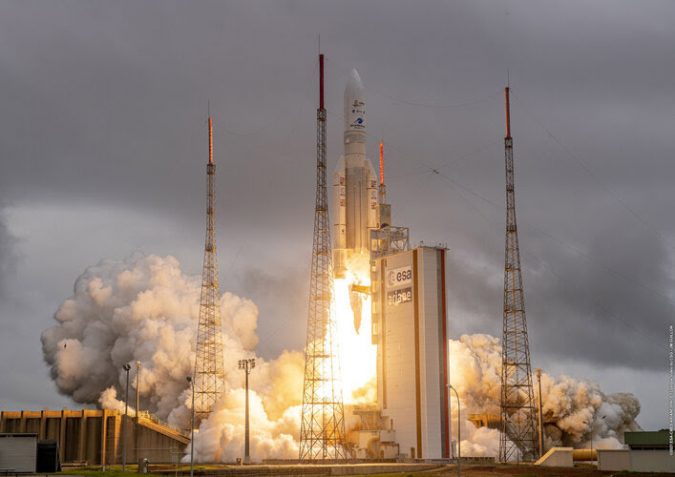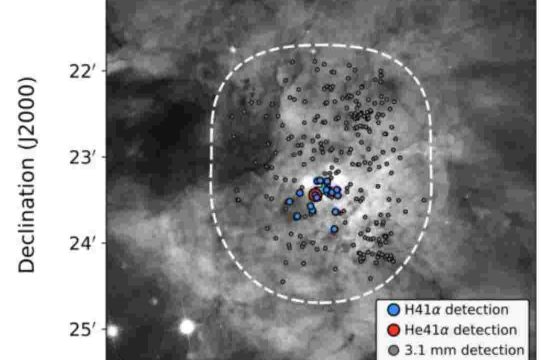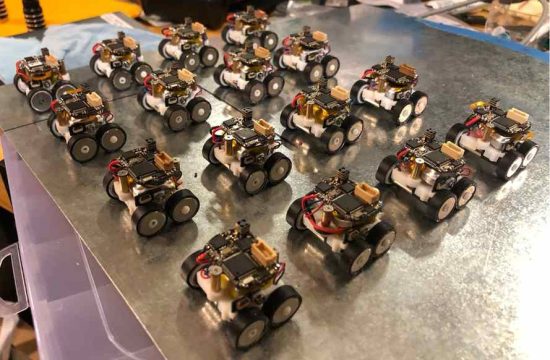The James Webb Space Telescope lifted off on an Ariane 5 rocket from Europe’s Spaceport in French Guiana, at 13:20 CET on 25 December on its exciting mission to unlock the secrets of the Universe.
Following launch and separation from the rocket, Webb’s mission operations center in Baltimore, USA confirmed Webb deployed its solar array and is in good condition, marking the launch a success.
In the coming month, Webb, an international partnership between NASA, European Space Agency(ESA), and the Canadian Space Agency (CSA), will travel to its destination: the second Lagrange point (L2), where it will study the Universe in infrared.
“Launching Webb is a huge celebration of the international collaboration that made this next-generation mission possible. I want to thank everyone involved with the design, construction, and launch of this ambitious telescope, for making this day a reality. We are close to receiving Webb’s new view of the Universe and the exciting scientific discoveries that it will make,” says Josef Aschbacher, ESA Director-General.

“The James Webb Space Telescope represents the ambition that NASA and our partners maintain to propel us forward into the future,” says NASA administrator Bill Nelson. “The promise of Webb is not what we know we will discover; it’s what we don’t yet understand or can’t yet fathom about our Universe. I can’t wait to see what it uncovers!”
“CSA is proud to have contributed critical instruments to this large‑scale international partnership as part of a global effort to spur the next great scientific leap. Canadian astronomers are excited to use Webb’s data and benefit from the tremendous science opportunities offered by this one-of-a-kind observatory,” says CSA President Lisa Campbell.
The Webb observatory had to be carefully folded into the specially adapted Ariane 5 fairing for launch, which jettisoned away about three minutes after liftoff. Ariane 5 then began a special roll manoeuvre to protect Webb from the Sun’s radiation. After 27 minutes the telescope was released and the upper stage boosted away.
“I am very happy and proud that the versatility and reliability of Ariane 5 have enabled the launch of such a ground-breaking mission. This is a tribute to the skill and dedication of all the teams involved,” says Daniel Neuenschwander, ESA Director of Space Transportation.
Now in space and on its way to L2, Webb will undergo a complex unfolding sequence. In the months after, the instruments will be turned on and their capabilities tested. After half a year in space, Webb will start its routine science observations.
Webb will see farther into our origins: from the Universe’s first galaxies to the birth of stars and planets, to exoplanets with the potential for life, and our own Solar System.
“The idea for Webb started with the dream of astronomers to observe the birth of the first galaxies in the early Universe, but the telescope will be able to do so much more than everyone had hoped for,” says Günther Hasinger, ESA Director of Science.
ESA contributed to two of the four scientific instruments onboard Webb: NIRSpec and MIRI. “It is down to the excellence of the European industry and scientific community that the development of these complex instruments was made possible,” Günther adds.
“We are now looking forward to the beautiful images and spectra that Webb will obtain. The European astronomical community is excited to see the results of the 33% available observing time they competitively won for Webb’s first year,” says Antonella Nota, ESA Webb Project Scientist.








